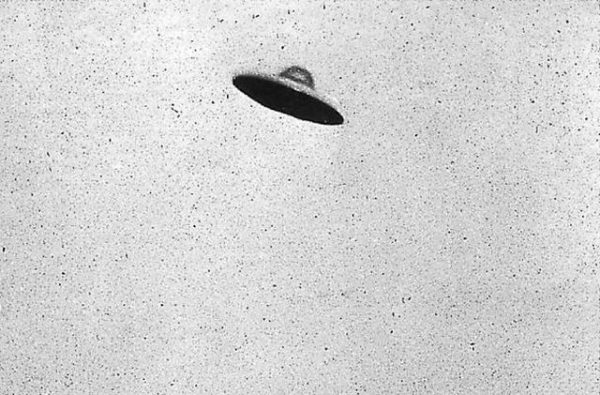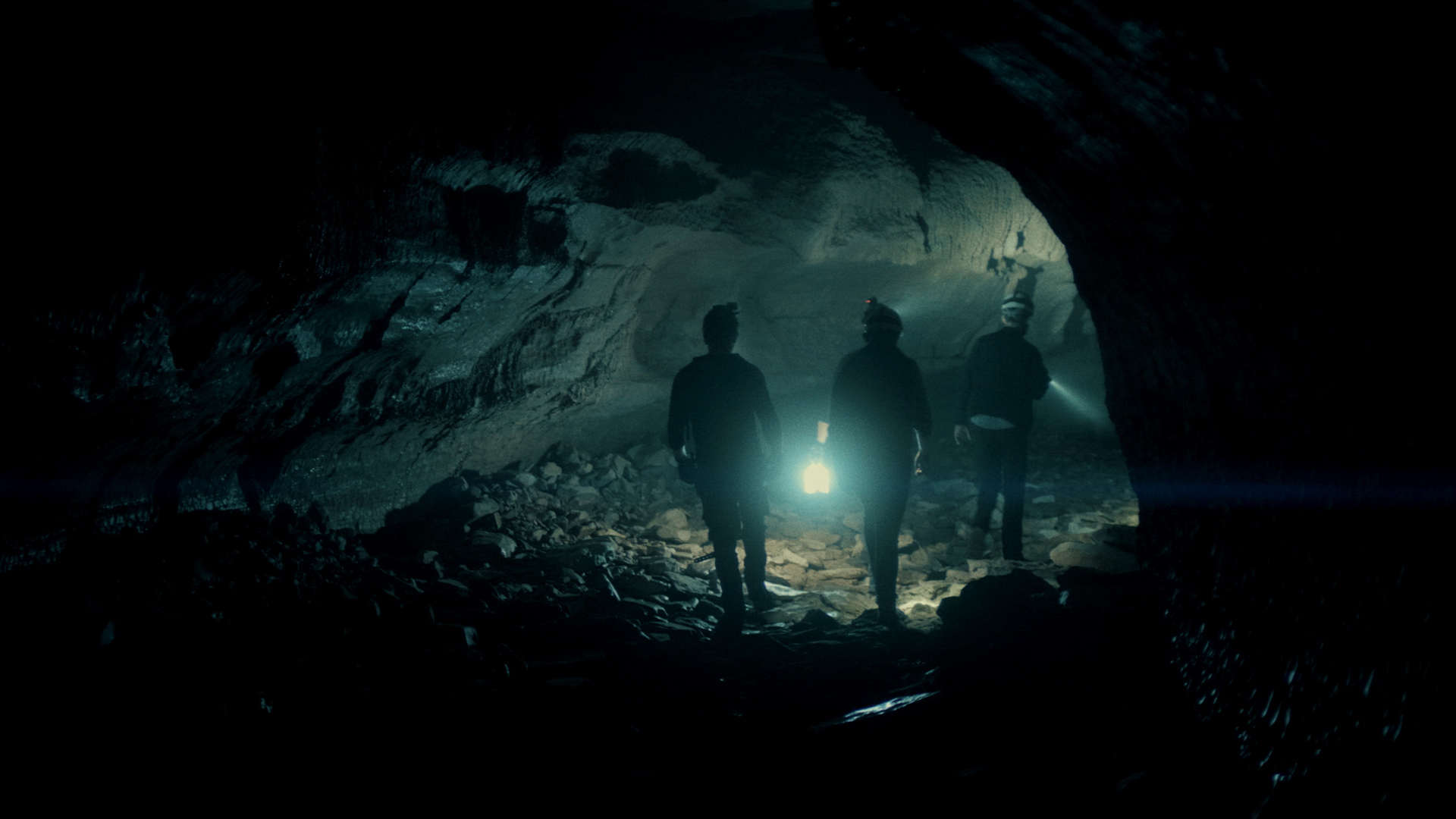
Canada: A Haven For UFOs?
- March 3, 2018
- 0
by Renato Vesco
On November 27, 1944, a U.S. Air Force B-27, returning from a raid on Speyer, West Germany, encountered a huge, orange-colored light moving upward at an estimated speed of 500 mph. When the pilots reported the object, sector radar replied negatively, because nothing had registered on the screen. But the object seen by the returning bomber was only the first of numerous UFOs spotted by American pilots over wartime Germany, and promptly baptized “foo-fighters.”
Fighter pilots Falls and Backer, of the 415th Squadron, reported such an encounter a month later, forcing the Air Force to admit that such objects might exist. Later encounters with foo-fighters led experts to assume they were German inventions of a new order, employed to baffle radar. How close they had come to the truth, they learned only when the war was over and Allied Intelligence teams moved into the secret Nazi plants.
The foo-fighters seen by Allied pilots were only a minor demonstration, a fraction of a vast variety of methods used to confuse radar and interrupt electromagnetic currents. Work on the German anti-radar Feuerball, or fireball, had been speeded up during the fall of 1944 at a Luftwaffe experimental center near Oberammergau, Bavaria. There, and at the aeronautical establishment of Wiener Neustadt, the first fireballs were produced.
Later, when the Russians moved closer to Austria, the workshops producing the fireballs were moved to the Black Forest. Fast and remote-controlled, the fireballs, equipped with kliston tubes and operating on the same frequency as Allied radar, could eliminate the blips from screens and remain practically invisible to ground control.
The Nazi Feuerball failed to interfere with the Allied air offensive. The foo-fighters had been launched too late and could no longer change the course of events, but were significant not only because they were the outcome of a technical evolution that could have led to far more dangerous weapons, but also because they showed that Nazi technology had moved in a direction far beyond anything suspected by the Allies.
As the fall of Germany approached, the Nazi leaders reverted increasingly to an ambitious project created by Franz Hofer, who had become high commissioner for the Italian Tyrol and the Southern Alps. The project foresaw setting up an impregnable fortress in the mountains, including parts of Italy, Austria, and Bavaria.
Hofer submitted his plan to Hitler’s aide, Martin Bormann, in November 1944, but he had prepared for this moment back in 1938, when Nazi agents carefully mapped all mountain passes, caves, bridges, and highways, and located sites for underground factories, munitions dumps, arms, and food caches.
To complete work on this fortress, Hofer demanded a slave-labor force of a quarter of a million – 70% Australian workers, and 30% men of the Tyrolese home guard. “U-plants” were to be set up underground as gigantic workshops and launching pads for the secret weapons that were to turn the tide of war in favor of the Nazis.
Among these were some 74 tunnels along Lake Garda, in northern Italy, which were to be adapted and transformed into a vast assembly plant by Fiat of Turin, in close collaboration with Minister Albert Speer’s department. Seven other tunnels along Lake Garda, near Limone, were to produce special weapons tested at the Hermann Goering Institute of Riva del Garda.
According to the archives of the German High Command and of the Allied Combined Intelligence Objectives Subcommittee, other plants in vital areas of central Germany, codenamed MWerke, were to produce powerful missiles such as the giant A9/A10, destined, it was hoped, to destroy New York and Washington.
But most important was the Alpine area, for it was from there that the supreme weapons were to come. As the gray March rain fell in a long, slow drizzle over Wurtemberg, a flight of Flying Fortresses wound its way back from a successful raid. Suddenly, from out of the clouds and the rain, a strange aircraft appeared, sweeping around the group of aircraft at high speed.
The craft, completely round and without any visible propulsion unit, emitted a half-dozen bluish clouds as it swept by. The clouds moved in on the American planes, which immediately exploded. This report, never released by the Allies, was made by a French diplomat. It was forwarded to Free French Intelligence Headquarters at Algiers.
The top-secret report referred to the “blue clouds” as something approaching anti-aircraft projectiles based on the grisou (fire-damp) gas found in mines, and which had been successfully tried against other bombers over Lake Garda.
The French report was intercepted by Italian agents and deciphered at SID (Italian Counter-Intelligence) Headquarters at Castiglione della Stiviére. The message was later captured by a military intelligence team operating for the Eighth Army in Italy.
The contents of the message was not new to the Allies. Already, some time ago, shortly after the bombing of Dresden, British and U.S. intelligence had obtained a brief account concerning the use of some such weapon against a group of twelve American bombers. That message, which came from an agent in Switzerland attached to Allen Dulles’s team, also stated the attacker had been “a strange hemispherical object which flew at fantastic speeds and destroyed the bombers without using firearms.”
Then, after the German surrender in May 1945, a team of British agents, investigating the files of some of the underground factories in the Black Forest, discovered that a large number of documents concerned “important experiments made with liquid oxygen for new turbine engines capable of developing extraordinary power.”
Other documents described the use of “gaseous explosives,” which had been originally tested in Austria in 1936. Their existence was later confirmed by the ALSOS Mission and by Dr. Hans Friederich Gold of the Laboratory for Aeronautical Research at Volkenrode. The ejection of gaseous explosives had been part of the program tackled by researchers on Lake Garda, and later tested with success by the circular flying object against Allied bombers.
This object, in German military files, already had an operational name: “Round Lightning” (Kugelblitz). Long and close cooperation between the special Air Research Corps of the SS, Austrian research centers in Vienna, the Hermann Goering Works, and the vast complex of underground tunnels had previously produced an amazing improvement on the fireball or foo-fighter which, despite its anti-radar effectiveness, remained comparatively harmless.
But by combining the principle of the aircraft with a round, symmetrical plane with direct gyroscopic stabilization, employing an ejector-gun using grisou and a gelatinous organic-metallic fuel for a total-reaction turbine, adding remote control, vehicle take-off, infrared seeking equipment and electrostatic firing systems, the harmless fireball became the lethal Kugelblitz!
Believe me, I can prove what I say. To be on the safe side, the Kugelblitz employed, in addition to its electrostatic firing system, a similar system based on shortwaves, which was built by the Patent Verwertungs Geselischaft of Salzburg, Austria. The whole thing formed one compact, round mass that had absolutely nothing in common with any flying object ever produced.
In documents found by British intelligence teams and submitted to the British Intelligence Objectives Subcommittee – documents I have been able to study – these and many other details are known. They can be found in the Subcommittee’s Final Report Number 61 on the “Weapons Section of the L.F.A., Volkenrode.”
Kugelblitz, together with its younger brothers – the fireball, the lens-shaped bomb, and other weapons, began the real history of UFOs. In itself, it was a second-generation fireball. The “round-lightning” weapon, the incredibly fast and mysterious disc-shaped craft that had been rumored and sighted in action, was used only once!
As the Allied forces crossed the Rhine, the only craft of its type was destroyed by the SS on instructions from Berlin, to prevent its capture. But ever since, due to the severe censorship imposed by “T” Force of the British Army in Germany, and later, thanks to the complete blackout imposed by London, nothing more was heard of Round Lightning.
I know that agents of the “T” Force camp at Bad Gandersheim closely examined the documents found in the tunnels, which had been elaborated on by the technical general staff of the SS, and by technical control of the Henschel and Zeppelin works.
These documents concern the propulsion unit of the Kugelblitz prototype built by Kreislaufbetrieb Motor D.W. in 1943 for the F.F.K.F. (Forschungsinstitut for Kraftfahrt and Fahrzeugmotoren) at Stuttgart-Untertuerkheim, and perfected by professors Kamm and Ernst. The British called this motor an “oxygen recycle system.”
It was later abandoned in favor of the Walter turbine, powered by hydrogen peroxide. The documents found discuss the possibility of using both systems in a compound-type propulsion unit. To these basic facts, I must add that a mass of documents and equipment were taken by British “T” teams to Bedford, and then to Canada and Australia.
In a certain sense, the British were more intelligent than the Americans, for they permitted German scientists to complete their work in Germany, on the sites where they had worked all through the war – only, of course, under close supervision. This happened at Darmstadt and Goettingen.
Later, these installations were dismantled and shipped to Britain. The Transport Service of the British Ministry of Aviation discreetly shipped the scientists and documents to Britain, Canada, and Australia, in successive phases. Lists of the scientists to be sent overseas had been compiled in the spring of 1944 by the B.I.O.S., and formed separate and specialized teams.
One such team, composed of Professors Ben Lockspeiser and W. J. Richards, Dr. S.H. Hollingdale, and Captain A.D. Green, handled “advanced projects, missiles, jet, and turbine craft. ” Another, including T.A. Taylor and M.A. Wheeler, investigated German advances in the field of thermo-refraction. Another team, which obtained the services of Dr. Ernst Westermann, former director of the F.D.R.P. Institutes of Speyer and Saarbrucken, concentrated on the fireball projects.
The Ministry of Aircraft Production, similar to the German wartime Jaegerstab, ceased to exist officially on March 31, 1946, and became part of the Ministry of Supply. In the years that followed, these teams, and especially the experts headed by Professor Lockspeiser, worked on a multitude of German projects.
They adapted these to their own experiments in the field of “suction” wings, and to the work of two German scientists, Professors Prandtl and Busemann, in order to develop a high-speed fighter in which the air intake along the wings was discharged through a half-moon-shaped crescent along the fuselage, in order to both drive and support the vehicle at high speeds.
This research comes to mind when one remembers the incident of January 3, 1956. A Cessna, employed on an aerial photography mission near Pasadena, encountered three circular flying objects, which circled it at a speed of 1,600 mph, and at a distance of two miles. One of these objects, while suddenly breaking away from the formation, gave off a long, vaporous trail as it sped through a cumulous cloud, cutting the cloud in two. “Exactly as if it had sucked up the cloud,” the Cessna pilot exclaimed later.
Back in 1946, the British Broadcasting Corporation announced that Britain “would soon have aircraft capable of speeds well over 1,000 mph, that, according to some experts, such craft had already been built and that, in the near future, they could circumnavigate the globe several times, because they needed only fuel for takeoff and landing.”
Other British sources mentioned aircraft capable of speeds of several thousand miles an hour. More than twenty years have passed since the otherwise so eminently careful BBC boasted of “Britain’s planes of the future,” and officially, these aircraft still remain little more than a dream.
And yet, did not Sir Ben Lockspeiser, the man who was in charge of one of the most responsible “T” teams, declare that “such craft would need no fuel’?” Did he not imply that such craft would gain their own propellant from the atmosphere, by suction and by expulsion?
Porous sinterization of metals for use in suction-type aircraft was under way in Germany before World War I, and confirmed by numerous reports and documents seized by the Allies. An overall report on this was made to the British Intelligence Objectives Subcommittee, covering the period 1939-45 (Report No. 20) and concerned the work of the Plansee Werke of Reutte, Tyrol, and the Vereinigte Leichtmetaflwerke of Linden, near Hanover.
Liquid oxygen, which powered a large number of German wartime V-weapons, had been perfected by French scientist Georges Claude. According to a Combined Intelligence report, an advanced-type power plant was found in an underground workshop at Wittringen, near Saarbrucken.
In Britain, scientific papers produced by members of the “T” teams carried suggestive titles such as “Boundary Layer Flow Over a Permeable Surface Through Which Suction Is Applied” (J.H. Preston), “The Aerodynamics of Porous Sheets” by G.J. Taylor, and “Pankhurst’s Aerofoil Catalogue.” The London Daily Herald of January 15, 1955 stated: “In the past three years, the government reserved a budget of three billion pounds for the RAF. This sum has been spent, but without any visible trace of such investment.”
In 1959, aeronautical engineer N.S. Currey wrote: “Canada today must be counted among the most advanced aeronautical powers of the world,” and added cautiously, “This refers above all to the field of jet propulsion.”
The Canadian Department of Mines and the Technical Surveys Mapping Branch reserved a vast area – 125,000 square miles – for production of experimental aircraft. This was one of the decisions reached by the committees of the Commonwealth Conference on Aeronautical Research.
This desolate, heavily wooded, and mountainous region between British Columbia and Alberta, with the Peace River District as its northern frontier and Washington State to the south, was an ideal location with easily controlled roads and few settlements, but good communications in and out, via the trunk line from Prince George to Edmonton.
Britain already had considerable wartime experience in this sort of enterprise. In 1942, at the height of the German raids, the RAF had set up five secret airports in the very heart of the New Forest, in Hampshire. The big thing about these installations was the fact that they included complete industrial plants, decentralizing major groups for essential war production. They were called “shade workshops.” The Germans, too, had much experience in this field. One of their major plants at Volkenrode resisted all attempts at aerial identification throughout the war.
On an official level, neither the British nor the Americans saw eye-to-eye in scientific matters at the close of the war against Germany. The United States’ refusal to share atomic secrets with Britain was never quite forgotten in Whitehall. Britain set out to prove, along with Canada, that she was well able to produce her own fission bomb. If Congress steadfastly accused the British of giving little or nothing in return for information, the British felt they had been mistrusted and severely neglected. They preferred to go ahead with their plans in Canada.
The fact that the area has been photographed again and again by reconnaissance planes, both U.S. and Russian, did not perturb the Canadian or British authorities. The plants and saucer ports are underground, hidden in the primeval forests of British Columbia.
The question immediately arises: Why have Britain and Canada failed to make such craft available to their NATO partners? There may be many answers to such a question, but one of the main points is lack of confidence and fear of being exploited. And why should not Britain and her Commonwealth partner retain one major trump card, which may one day become invaluable’? The pooling of scientific secrets is rarely entirely sincere.
All the evidence, based on my 18 years of research into the most secret documents of the past war, have convinced me of one thing: flying saucers do not come from space. They come from a few hundred miles outside the United States. They mean no harm, and Washington knows this. Hence the long-standing order to all U.S. Air Force pilots: “intercept, but do not fire upon.”
Printed with the permission of New Saucerian Press

